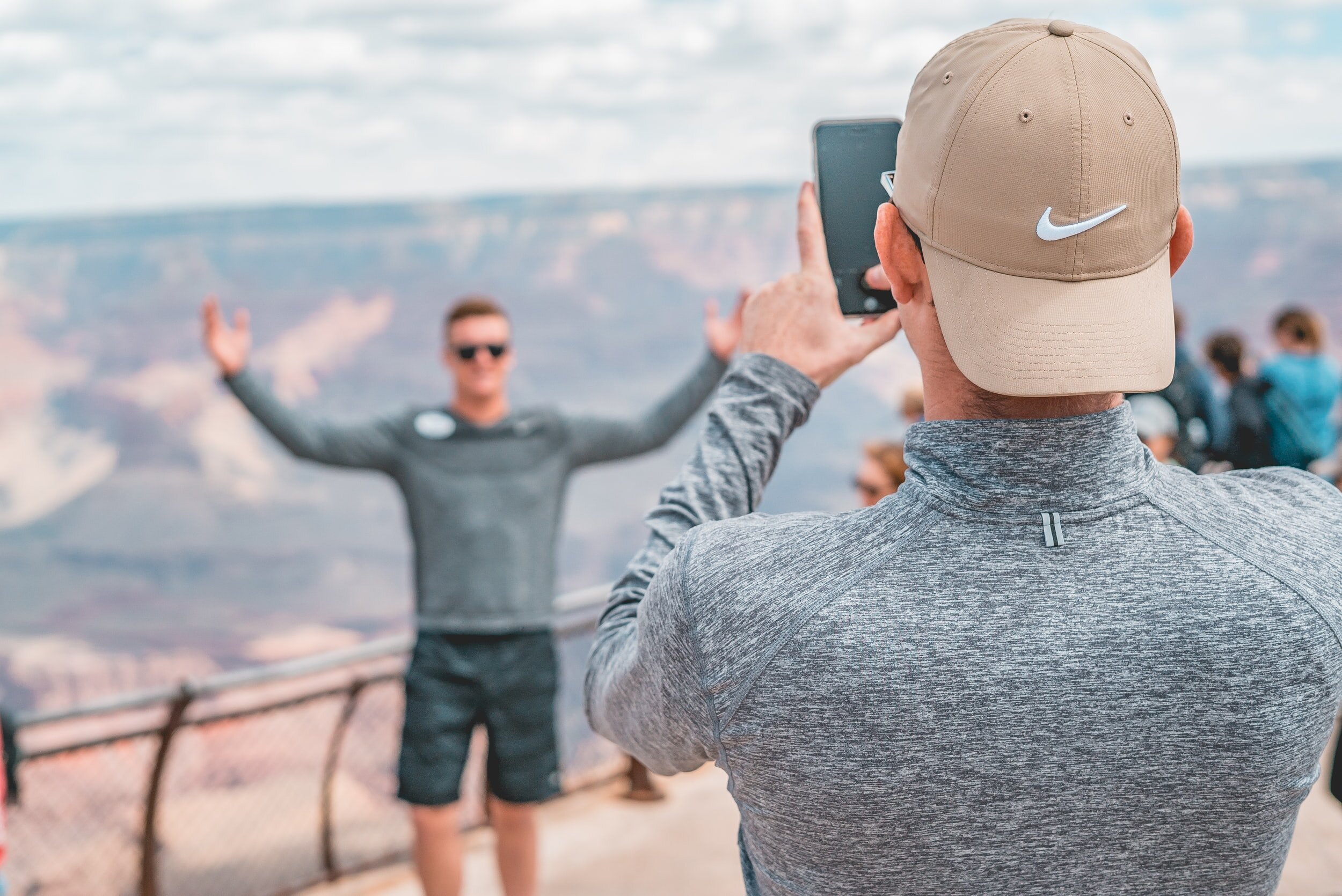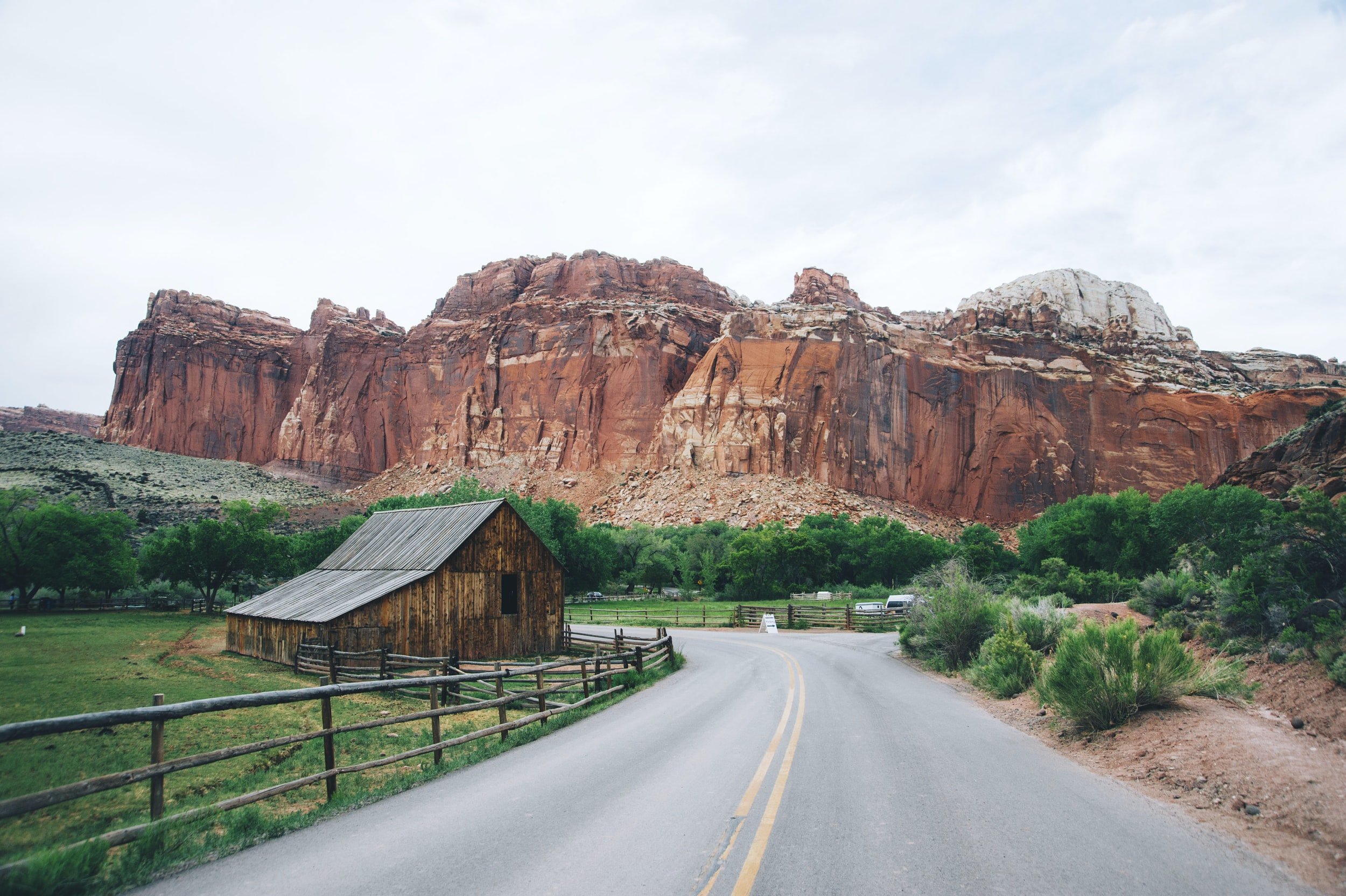What are the 5 Best National Parks for Student Groups? (Reviews/Ratings/Pricing)

Writer and historian Wallace Stegner called America's National Parks "the best idea we ever had. Absolutely American, absolutely democratic, they reflect us at our best…"
We couldn't agree more, Mr. Stegner. Our National Park's are America's best idea. As a trip leader, you know the wonder of our National Parks and the need to share the experience with your students. At some point in everyone's life, they should have a moving experience in nature.
We hear it all the time, "I'd love to take my students to a National Park." Or, "What is the best National Park to take students." We've got you covered. The short answer is, it depends. Planning a National Park requires the same steps as leading any other trip.
Having a great trip starts well before your students say goodbye to their parents at the departure bus. Selecting a great destination is the first step. Building your trip culture are the seeds that you plant to make a memory-making trip. Pre-planning builds rapport with your group and sets expectations.
Avoid these mistakes planning your trip
The Ultimate School Trip Pre-Departure Checklist
Cheat Sheet: Lead Your Best School Trip Ever
The criteria vary from what you're studying in school to what will most impact your students. Some trip leaders want a pure National Parks Experience, and other trip leaders wish to combine a National Park with a day or two in a city. The time of year you travel will factor into your decision of which Park to visit.
Of course, if you're building a trip that will genuinely impact your students, you'll need to plan age-appropriate activities, arrange lodging and food, be led by an ace guide, be driven by an ace driver, and work with a tour company that delivers premium tour experiences. (Psst! Hey there, we can help with all of this.)
Places We'll Cover:
Bryce Canyon and Zion National Park
Everglades National Park and the Florida Keys
Yellowstone National Park
Grand Canyon National Park
Yosemite National Park
Bryce Canyon and Zion National Park
Located in Southwestern Utah, Bryce Canyon and Zion National Park are two of the National Park Service jewels. Zion is most well known for its picturesque red Navajo Sandstone cliffs. Zion is a popular destination. There are more annual victors to Zion than Yellowstone and Yosemite. Groups love to hike the narrows, wading through knee-deep water in the Virgin River. Groups love biking and exploring a dozen miles of paved roads in the park.
Bryce Canyon is best known for the thousands of hoodoos throughout the park. A hoodoo is a tall, thin tower of rock that originates from the bottom of an arid basin. The rock that makes up hoodoos is quite soft and prone to erosion forming intricate spire-like patterns. Groups say that Bryce Canyon looks like a castle. We agree. Bryce Canyon is a magical place.
When to go - November through February is the low season at Zion and Bryce Canyon. March can be rainy and the summer is sweltering at Zion. Bryce sits at 8,000 feet and the summer is pleasant. There are many accounts of large crowds in September and October. To limit traffic and disperse crowds Zion has instituted shuttles to visit the upper Zion Canyon and the Scenic Drive from March through the fall.
Cost -
-
5 days/4 nights in Arches/Bryce/Zion “air” costs $2,300–$3,300.
-
5 days/4 nights in Arches/Bryce/Zion “bus” costs $2,100–$3,100.
Everglades and Florida Keys
Everglades National Park has been known as many names, grass water, river glades, everglades, and the river of grass. Whatever you want to call it, Everglades National Park is the 3rd largest National Park in the contiguous United States. While the recreation area is expansive, the colorful and diverse bird population brightens the landscape. Student groups love taking boat rides and seeing alligators and crocodiles. On occasion, river otters, manatees, and green sea turtles sometimes pop their heads up and wow groups.
Spend a few days in the Florida Keys for an interactive diving experience. A wonderworld of coral and colorful fish are below the surface, waiting. Groups also love kayaking expeditions and relaxing on the beach.
When to go - December through March is the best weather with the least amount of bugs. Traveling to southern Florida is a special treat for groups that experience cold winters at home.
Cost -
-
5 days/4 nights in Everglades and Keys “air” costs $2,300–$3,300.
-
Five days/4 nights in Everglades and Keys “bus” costs $2,100–$3,100.
Yellowstone National Park
President Ulysses S. Grant established Yellowstone as the first National Park in 1872. This act established the National Park System for the rest of the world. The park spans Wyoming, Montana, and Idaho's states and can be further divided into wildlife in the north and geology in the south. When visiting the park, always share your plan with a park ranger. They will be the most up-to-date source of information in the park. Your group might also consider participating in a junior ranger program!
Yellowstone is home to 67 mammal species, the largest concentration in the US outside of Alaska. If a group is lucky enough, they'll start their day early and meet with a specialized guide who tracks wolf migration. Groups will plug into a society of wolf-watchers that very few people ever experience. They'll hear tales of wildlife and hopefully see a few megafaunas on their journey. Groups love seeing the Wildlife in the Northern Section of the Park, which earns its designation as the American Serengeti.
In the South, groups will love taking videos and creating memories as Old Faithful. Visit the Mud Volcano and see pools of bubbling mud. In the summertime, many of the pools have dried up into fumaroles (steam vents). Please don't take it from us. In 2016 a survey of more than 1,200 groups, 83% listed wildlife as an important reason to visit. At the same time, 96% listed Natural Beauty as a reason to visit.
Ten miles south of Yellowstone, you'll find Grand Teton National Park, National Park. John D. Rockefeller described the Grand Tetons perfectly, "Quite the grandest and most spectacular mountains and most spectacular mountains I have ever seen." Well said.
When to go - The best times to visit Yellowstone National Park are from April to October. April, May, September, and October have cooler weather and thinned out crowds.
Cost -
-
5 days/4 nights in Yellowstone “air” costs $2,500–$3,500.
-
Five days/4 nights in Yellowstone “bus” costs $2,300–$3,300.
Explore the Grand Canyon
According to www.nps.gov, the Grand Canyon in Arizona is the second most visited National Park. The Grand Canyon is at the top of the National Park list for many trip leaders. And for a good reason. Trip leaders and their students love the views, hikes, and history at the Grand Canyon. Hiking trails along the rim are flat with birds-eye views 6,000 feet into the canyon. Stepping below the canyon's rim offers groups an easy descent down the canyon and a rigorous hike back up the canyon. At certain times of the year, the rim area of the Canyon can be snowing, while groups are rafting the Colorado River in bathing suits. Groups love rafting in the Colorado river!
President Theodore Roosevelt designated the Grand Canyon as a National Monument in 1908. His act created a refuge for over 500 species of animals, many of which are seen by field trip groups today. The Geology of the Grand Canyon steps groups into the past. The many layers of rock in the canyon represent nearly 2 billion years of geological history. If you're lucky enough or brave enough to get to the bottom, you'll see 1700 Million Years Old Visnu Group Rock.
Native groups have inhabited the region for thousands of years. Make sure to visit the Intertribal cultural heritage center to gain a cultural understanding of the 11 tribes and bands that called this region home.
When to Travel - With elevations of 2,000 to 9,000 feet, the park experiences massive temperature swings. The canyon's rim can experience snow in June, and it can be 80 degrees the next day. The ideal weather to experience the Grand Canyon is from Mid April to mid-November.
Cost -
5 days/4 nights in Grand Canyon "air" costs $2,500–$3,500.
Five days/4 nights in Grand Canyon "bus" costs $2,300–$3,300.
Yosemite National Park
Standing on the floor of Yosemite Valley and staring up at El Capitan and Half Dome is a moment you and your students will never forget. Most large and small groups only make it this far. Lucky for your group, there are plenty of great hikes and backcountry opportunities to make memories in Yosemite.
This unique California ecosystem is home to gushing waterfalls that can be seen from afar at vista points or seen up close after steep hikes from the valley floor. Some waterfall favorites are Yosemite Falls, Vernal Falls, Nevada Falls, and Bridalveil Falls. Visit groves of Sierra Redwood and Sequoia trees dotted throughout the Park. Naturalist John Muir put it best, “But no temple made with hands can compare with Yosemite. Every rock in its wall seems to glow with life.”
When to Travel - Due to snow, many roads in Yosemite are closed from November through March. While the park is open the access is limited. Melting snow in April and May creates roaring volumes and mist at the park’s waterfalls. Predictably the park is busy in the summer months and visitation numbers drop in September and October.
Cost -
5 days/4 nights in Yosemite "air" costs $2,500–$3,500.
Five days/4 nights in Yosemite "bus" costs $2,300–$3,300.
Conclusion - What are the 5 best national parks for student groups?
With the correct National Parks itinerary, you can lead your best trip ever, and you and you and your students will create lifelong memories. Imagine this, you’ve been home for a few days after leading a memorable National Parks Trip. You had fun with your students and created lifelong memories. You shared a moving experience in nature with your students, and they will never forget it.
If you have questions about leading a trip to a National Park, give us a shout. It's what we do, and we'd be honored to help.




